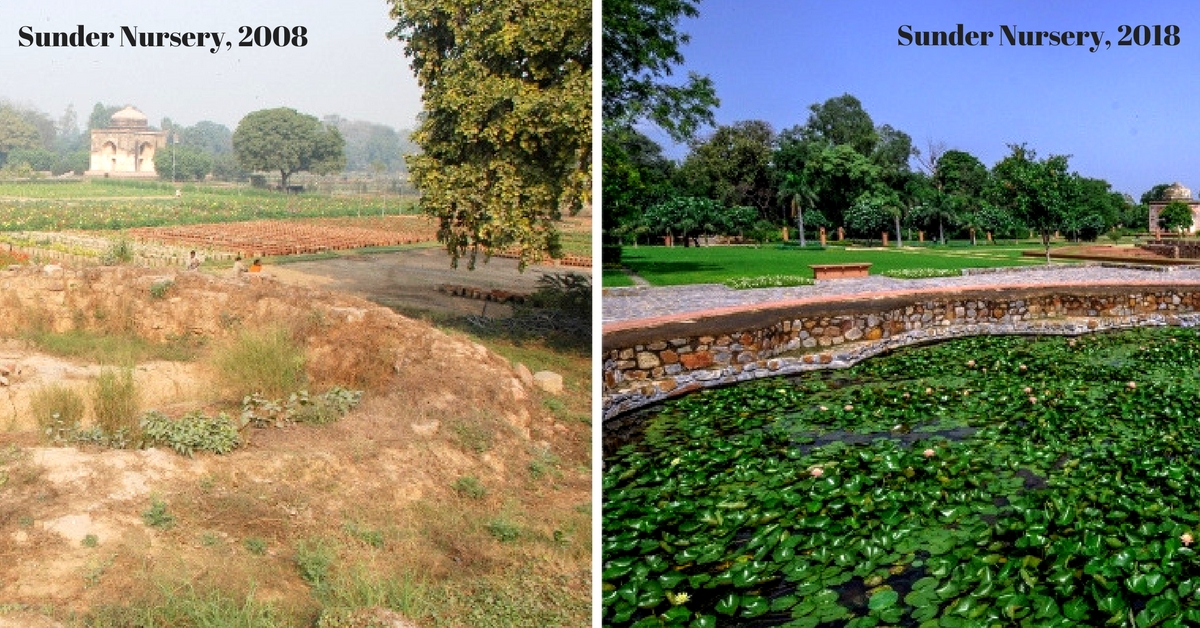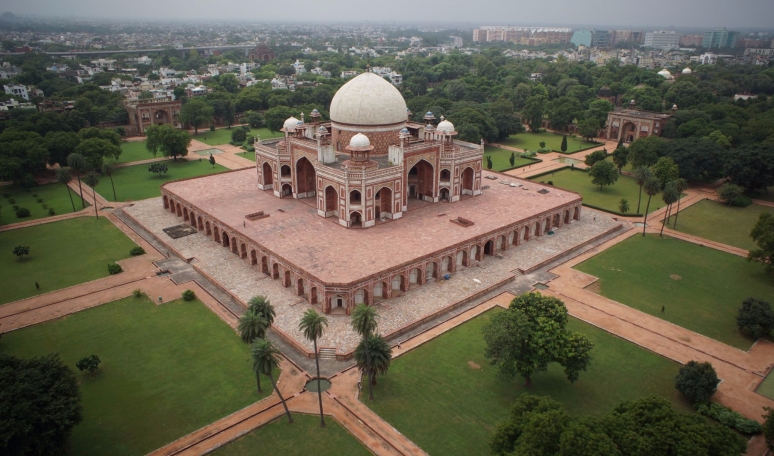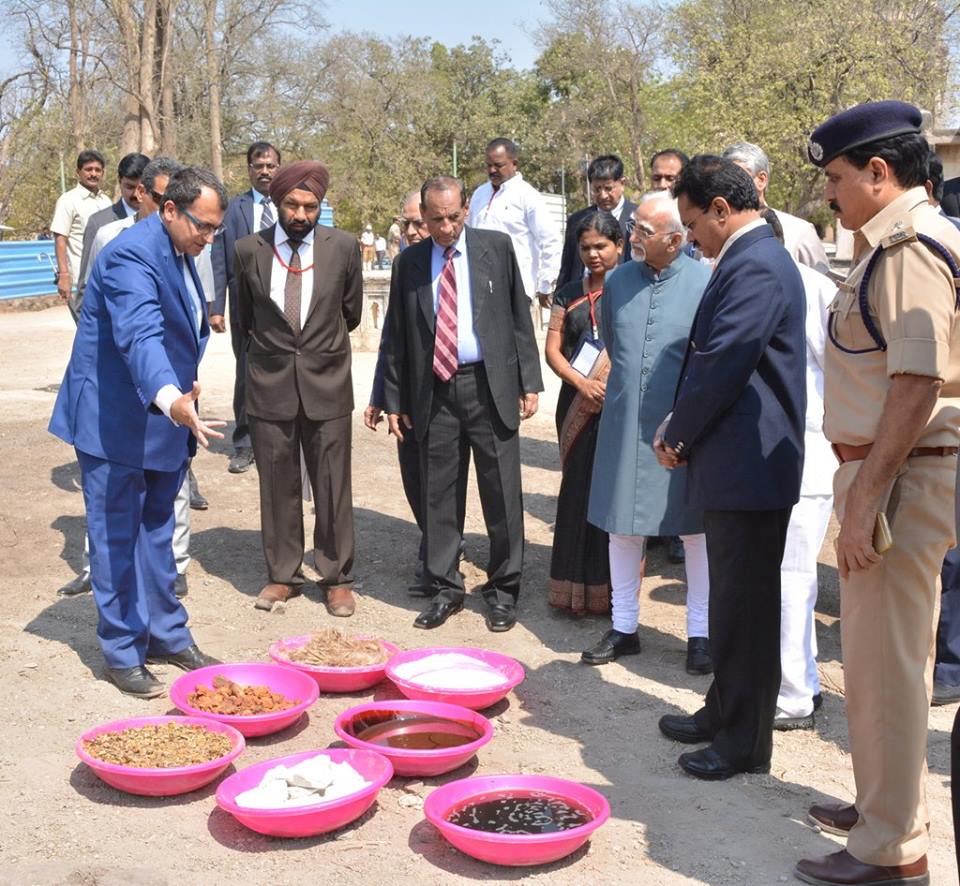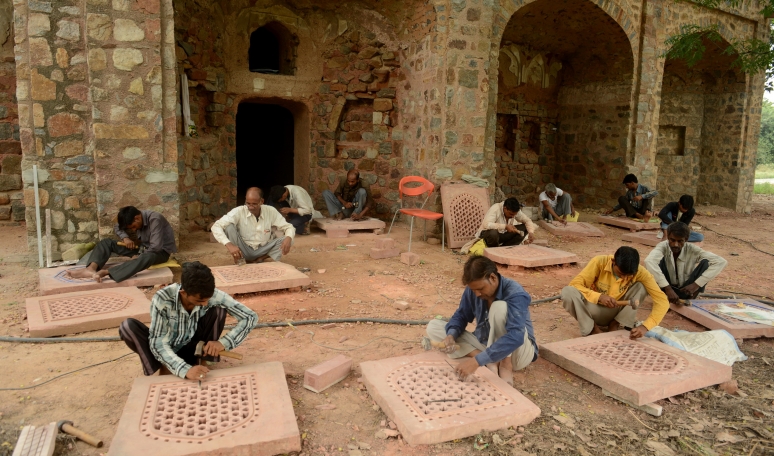Who’s Going to Save India’s Dying Buildings? Aga Khan Trust Has an Answer
Award-winning architect and India CEO of Aga Khan Trust for Culture, Ratish Nanda, takes us through why heritage conservation can help local communities and further socio-economic development.

The tomb of Humayun, part of India’s rich heritage, was once less of a wonder than it is today. It now houses a beautiful garden and park, known as the Sunder Nursery. The team behind its transformation comes from the prestigious Aga Khan Trust for Culture (AKTC).
Set up by His Highness The Aga Khan, the AKTC is part of a larger Aga Khan Development Network. The trust is dedicated to multiple objectives related to cultural heritage and has projects across major historic cities in the world.
“The notion of culture as an asset rather than a luxury is still a contested issue in many poorer parts of the world. As a result, a significant part of the world’s cultural heritage is at risk, as other needs are considered priorities,” says an excerpt from the official website.
This has been one of the main reasons for the Historic Cities programme undertaken by the organisation.

Several cities have received the aid and attention of the trust, which tries to transform heritage sites into ones that can play an active role in furthering economic and social development in the area.
Delhi was chosen as the site for its first conservation project in India. In 1997, on the occasion of 50 years of Indian independence, the Aga Khan spearheaded the garden restoration of Humayun’s Tomb. When the Government of India requested assistance in preserving and restoring national heritage sights in 2004, the trust decided to come back to the source of its earlier project and signed a MoU with the Archaeological Survey of India, Central Public Works Department, and the South Delhi Municipal Corporation in 2007.
This was how the Nizamuddin Urban Renewal initiative began. In the Hazrat Nizamuddin Basti, several small parks were created, and around 50 monuments were restored. The plan also included provisions for public toilets that would be managed by the community.
Further efforts led to the creation of a 90-acre park inspired by Mughal garden traditions in the area surrounding Humayun’s Tomb.

It was called Sunder Nursery, a garden which today is the pride of Indian architecture and restoration!
Using a plan created by landscape architect M Shaheer the garden includes a 600-metre ‘paradise carpet garden,’ a 30-acre micro-habitat zone with provisions for birds, an amphitheatre for cultural events, and 20 acres of nursery beds that the Central Public Works Department regularly use.
The team consisting of over 20 different disciplines, was led and coordinated by Ratish Nanda, India CEO of the Aga Khan Trust for Culture.

An award-winning architect, who chose to focus his career on heritage and conservation, Nanda believes that restoring heritage sites can be a key factor in developing economies.
“For several decades after independence, we ignored our heritage to modernise and develop. Fortunately, in recent years, attention is being given to the built heritage as it has come to be seen as a sustainable economic resource,” he says in a conversation with The Better India.
Today, the magnificent park is regularly visited by lakhs of tourists and locals alike and has over 280 species of trees! After several years, six monuments within the Sunder Nursery have listed on as part of the expanded Humayun Tomb’s World Heritage Site, a feat which came after immense hard work.
Apart from its urban renewal initiative in Delhi, the organisation is undertaking a renewal project in Hyderabad, involving restoration of the Quli Qutb Shah Tomb Complex.

Ratish says, “We aim to assist the Government where our assistance is sought. Recently we carried out the conservation of Stor Palace in Kabul on behalf of the Government of India as a gift to Afghanistan.”
According to Ratish, each building is restored using the same techniques that were involved in its construction.
By doing this, several niche artisans, who have preserved a tradition for generations, find job opportunities for their skills.

“In India, we are fortunate that many of our craft skills have survived, passed on from father to son. As such in our projects in Delhi and Hyderabad we have employed master craftsmen who can use the same materials and building crafts used by the original builders,” he explains.
Using the same kinds of techniques and materials utilised originally, is an essential part of the restoration process. Modern materials such as cement can be detrimental to historic buildings as the materials used then and now differ in terms of their fundamental physical and chemical properties.
The mark that the Aga Khan Trust for Culture has been able to make in the realm of heritage and culture is remarkable.

As per Ratish’s account, the trust has given over 6,50,000 working days of employment to master artisans, improved the quality of life for local communities, and secured the world heritage status for 12 monuments!
Additionally, the trust has played an active role in the formation of the National Policy for Conservation for the protection and maintenance of important historical sites across India; and through its partnerships with organisations such as the Ford Foundation and TATA Trusts, has been able to keep the message of heritage conservation alive!
You may also like: Why This 63-Year-Old School Dropout Is No Less Than An Archaeologist!
He adds, “In the historic urban context we like to work where there is a grand heritage site and an associated community that can benefit from the conservation effort. Through our projects, we want to show people that the economic value and conservation and development can and should be part of the same process for built heritage.”
Often, we fail to realise the importance of our heritage until it is lost. The efforts of organisations such as the Aga Khan Trust for Culture brings to light the ability of conservation and preservation to create a socio-economic change. The future looks bright, indeed.
(Edited by Gayatri Mishra)
Like this story? Or have something to share?
Write to us: [email protected]
Connect with us on Facebook and Twitter.
NEW: Click here to get positive news on WhatsApp!
If you found our stories insightful, informative, or even just enjoyable, we invite you to consider making a voluntary payment to support the work we do at The Better India. Your contribution helps us continue producing quality content that educates, inspires, and drives positive change.
Choose one of the payment options below for your contribution-
By paying for the stories you value, you directly contribute to sustaining our efforts focused on making a difference in the world. Together, let’s ensure that impactful stories continue to be told and shared, enriching lives and communities alike.
Thank you for your support. Here are some frequently asked questions you might find helpful to know why you are contributing?


This story made me
-
97
-
121
-
89
-
167











